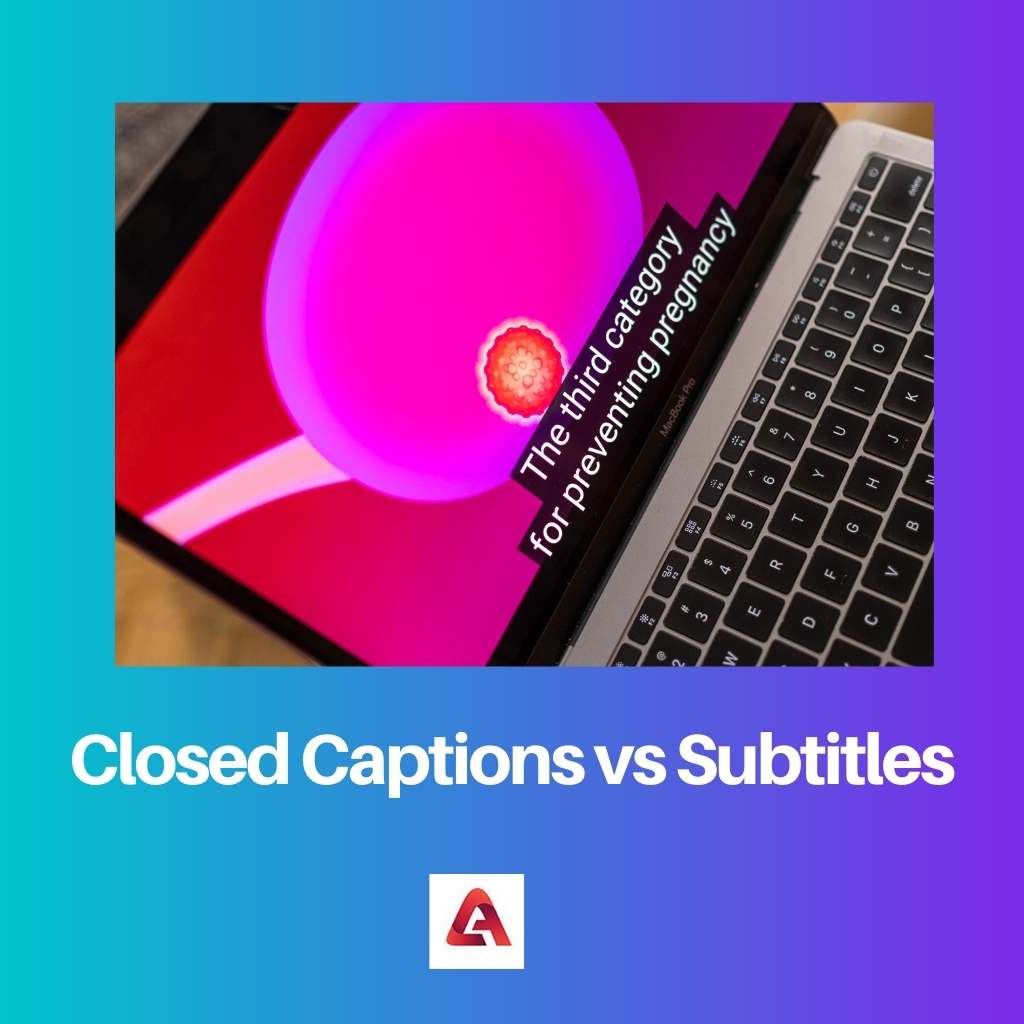Closed captions and subtitles may appear to be nearly similar at first sight, but the changes aren’t as minor as they appear. Choosing between the two may have a big influence on how people perceive your video projects – and it could reveal a lot more about your brand than you think.
Key Takeaways
- Closed captions provide a text version of the spoken dialogue and relevant non-speech sounds, while subtitles only transcribe the spoken dialogue.
- Closed captions cater to the deaf or hard-of-hearing, while subtitles target language learners or people watching content in a foreign language.
- Closed captions can be turned on or off, while subtitles are a permanent media feature.
Closed Captions vs Subtitles
Closed captions refer to text that is synchronized with the audio of a video and includes not only the spoken words but also non-speech elements like music, sound effects, and speaker identification. Subtitles refers to that only show the spoken dialogue and do not include non-speech elements.

Captions are employed when the visual medium is not accompanied by sound. Captions are also employed in still media, such as photographs, comic books, graphic novels, and other types of still graphic material. Without the use of audio, captions are employed to present the spectator with the viewing experience.
Subtitles are used to translate media presented in a foreign language into a language the viewer is acquainted with. Subtitles are timed transcriptions of audio files that help viewers understand the content presented on the screen by conveying the meaning behind the sound.
Comparison Table
| Parameters of Comparison | Closed Captions | Subtitles |
|---|---|---|
| Definition | When there is no sound, closed captions are texts that accompany the visual information. | Subtitles are transcriptions of audio files that are shown with visual and audio material. |
| Objective | Used to assist viewers in comprehending visual material | This tool is used to provide a textual translation of an audio file. |
| Scenario | When a sound is present, this expression is used. | When the viewer’s native language is not English. |
| Types | Closed captions and open captions are the two forms of captions. | Various languages have different subtitles. |
| Usage | Photographs, silent films, graphic novels, and other graphic media are all examples of this. | Only used in movies, TV programme, and other visual media. |
What are Closed Captions?
Closed captions are a written version of a television, movie, or computer presentation’s spoken part. Closed captioning was created to help people who are deaf or hard of hearing, but it can be used in many situations. For example, when you cannot hear the audio, you can read the subtitles in a busy environment (such as an airport) or a quiet environment (such as a hospital).
In line 21 of the vertical blanking period, closed captioning information is embedded inside the video stream ( VBI ). The text can only be seen with the use of a decoder, which can be incorporated into a television or purchased separately as a set-top box. On recent TVs, you can turn closed captioning on or off through the on-screen menu. On the other hand, open captions are a fundamental element of a broadcast that the spectator cannot turn off.
Most programs have subtitles before they are broadcast, but some programs, such as live news, require real-time subtitles. A stenographer listens to the broadcast and enters a shorthand version into software that transforms the shorthand into captions and adds the data to the television signal for real-time captioning. The new regulations will allow users to customize the size, color, and font of their captions and choose from various streams, such as a certain language.
What are Subtitles?
Subtitles are transcriptions of audio files that are shown alongside visual and audio assets. Subtitles are translated transcripts from the original audio language to the language that the viewers are acquainted with within most situations. Subtitles were first adopted in the 1930s to enable English-speaking audiences to understand international films shot in another language.
As a result, movie producers could accommodate more spectators from other nations and exhibit films in different countries. As a result, subtitles became a crucial tool for exhibiting and distributing foreign films and television shows to the world’s English-speaking population. In today’s globe, foreign-produced movies and TV shows account for over half of all movies and TV series seen in cinemas and on television. Therefore, subtitles must be provided in order to understand and get a better viewing experience when viewing such materials.
Subtitles are most commonly used to translate audio into a language that the audience can understand, but adding visual text through visual media can significantly improve the viewing experience of the deaf and hearing impaired. Subtitles are transcribed differently in different languages. Subtitles are created for other important languages, such as German, French, Spanish, and English.

Main Differences Between Closed Captions and Subtitles
- In the absence of sound, closed captions are texts that accompany the visual information. Subtitles are transcriptions of audio files that are shown with visual and audio material.
- Closed captions are used to assist viewers with comprehending visual content. The use of subtitles allows for a textual translation of the audio.
- When there is no sound, closed captions are utilized. When the language is unfamiliar to the audience, subtitles are utilized.
- There are two types of closed captions: closed and open captions. Subtitles are cautious with the language.
- Closed captioning is used with images, videos, silent films, and other media. Subtitles are exclusively used in movies, TV shows, and other similar media.






